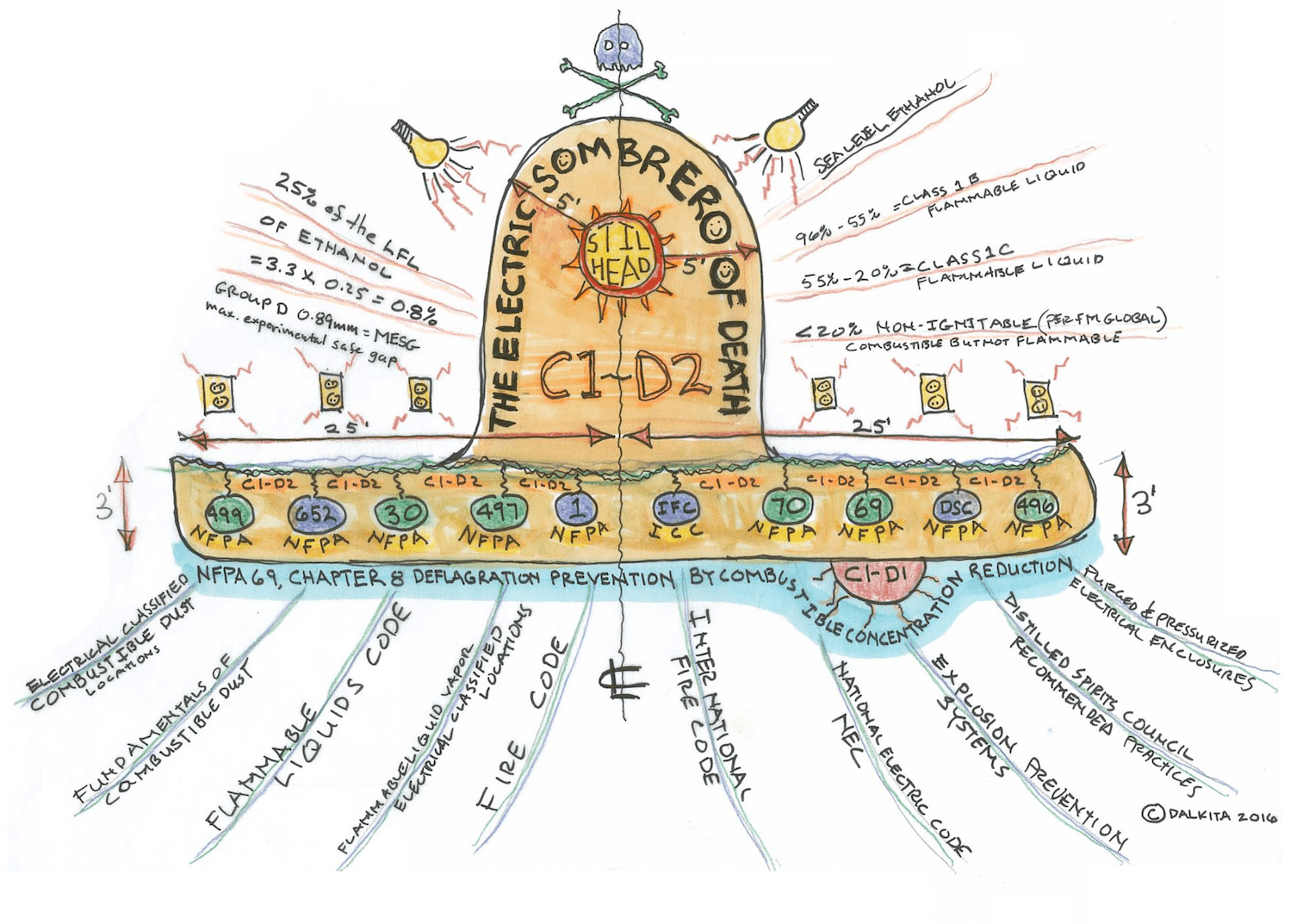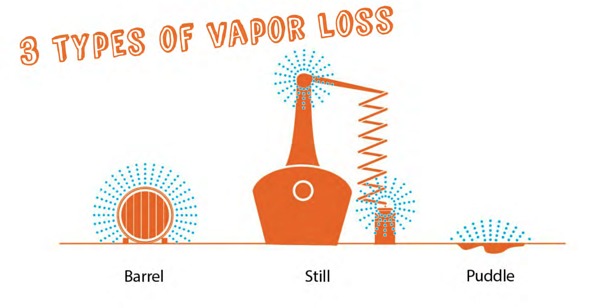Running a distillery can be exciting, rewarding, challenging …and dangerous?
With the distiller territory and working with high-proof liquids comes industrial equipment and the potential for industrial-caliber disaster.
Luckily, there are precautions you can take to ensure that toxic combinations of flammable vapor build-up and electrical equipment doesn’t send your precious craft distillery sky-high.
A recent workshop at ACSA and ADI Craft Spirits Conference and Expo made a somewhat unsettling potential hazard into a light-hearted learning experience.
Scott Moore of Dalkita Architecture and Construction developed an informative model called “The Electric Sombrero of Death” to illustrate the dangers of toxic gases in industrial settings, how to prevent dangerous scenarios, and which guidelines regulate safety.
Here it is:

Image courtesy of Dalkita.
What Is the Sombrero of Death?
The Sombrero illustrates the area around which flammable liquid is stored, dispensed, or mixed. Flammable liquid produces flammable vapor. This area is known as a Classified electrical area that is regulated by various building and fire codes as well as OSHA.
A Classified electrical location in a distillery contains the right proportion of fuel and air to allow combustion and fire. An area is considered Classified electrical if it exists near any potential source of vapor release.
Electrical sources must be located outside of the Classified area in order to comply with the code, to ensure that flammable vapor or liquid (like alcohol or ethanol) does not ignite due to electrical currents or sparks.
Examples of sources that have a surrounding Classified electrical area include:
- Barrels
- Stills
- Totes
- Tanks

Image courtesy of Dalkita.
To determine your Sombrero of Death, measure a 5ft. radius from any of your potential sources of vapor, and then a 25ft. radius from the source along the floor up to 3ft. from the floor.
Dalkita suggests that every distillery and brewery take precautions to prevent the combustion of flammable materials.
Precautions to prevent combustion of flammable liquids and vapors include:
- Locate wiring and electronic equipment outside of the Classified electrical area (or the Electric Sombrero of Death). This is the most important safety solution, and the most cost-effective.
- Regularly check air quality and equipment for leaks. Class I dangers indicates that flammable gasses or vapors are present in the air in a quantity sufficient to produce explosive or ignitable mixtures. Class II areas contain combustible dust. Class III areas contain ignitable fibers or flyings in a concentration in the air that could ignite.
- Air flow, air pressure, and ventilation is another consideration your facility should check. Provide positive mechanical ventilation in case of failure of ventilating equipment.
- Ensure that Class I areas are ventilated using positive-pressure ventilation from a clean air source.
Equipment that should be kept out of Class I areas unless rated for use in a Classified area include:
- Pumps
- Lights
- Portable Phones
- Handheld Electronics
Always regularly check your facility for compliance with safety regulations and codes when producing and storing flammable products and oxidizers.
Consult the NFPA to help select the correct equipment and install it correctly. Proof 33 Provisions is knowledgeable in key safety precautions and equipment that meets safety codes to protect your distillery and distillery workers.
Check out our selection of explosion proof pump motors for use near hazardous and Classified areas.
Want to learn more? Get in touch to get more information about explosion-proof equipment and distillery safety.
Thank you to Scott and Colleen from Dalkita for their presentation and sharing this essential information with our community of distillers and brewers.




